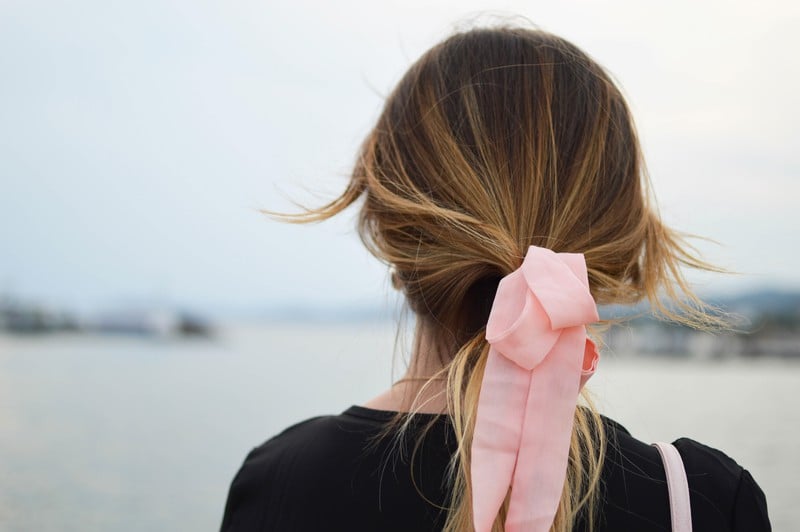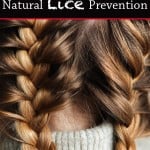Natural Lice Treatment (Even for Super Lice)
Lice is a part of parenting most of us hope to avoid. But in the event it happens, here are effective and less-harsh natural lice treatment remedies and prevention tips that actually work, based on research from medical journals and real life experience. You’ll also find proactive steps that may help your child avoid getting lice in the first place.
Table of contents
We don’t just have viruses, we have “super bugs.” And now we have “super lice”.
What are Super Lice?
Head lice are tiny, wingless parasitic insects that live among human hairs and feed on blood from the scalp. Sounds more than a little unpleasant, doesn’t it?
Well, it is. Luckily, they don’t fly and they’re not life threatening. But they are contagious and really annoying. And the itching and scratching they cause can lead to infected sores.
Adult lice are about the size of a sesame seed and are grayish white or tan in color. If you or your child have head lice, unless you have a really bad case, you will probably see the eggs (called nits) more than you will see the actually lice themselves. The eggs hatch within a week or two after they’re laid.
Research presented at an American Chemical Society meeting in August, 2015, showed lice populations in at least 25 U.S. states have developed resistance to over the counter treatments. These lice are called “super lice”or drug-resistant lice.
They aren’t actually larger than the run of the mill lice, but they’re immune to the usual over-the-counter and prescription drugs used to kill them.
Maybe those meds have been overused? Just food for thought.
Symptoms of a Head Lice Infestation
If you don’t actually see the nits or the lice, these symptoms could mean your child has a problem with head lice:
Scratching
The lice bite your scalp to get to the blood supply. Much like a mosquito bite, the itch is caused by a reaction to the saliva of the lice. If you notice your child scratching their head or complaining of feeling like something is crawling in their hair, take a really good look.
Also keep an eye out for swollen lymph nodes. Excessive scratching can cause infection of the sores and this can lead to a bacterial infection.
Small Red Bumps or Sores
If you see small red bumps on the scalp or around the neck and ears, check for head lice. These are bites. If your child is sensitive to the bites, they may develop a rash.
If you see the nits and/or the lice, start treatment. Of course, with these “super lice” most of the over-the-counter applications aren’t going to help. These all natural lice treatments still work simply because the lice haven’t built up a resistance to them.
How to Treat Head Lice Naturally
First, get a nit comb. It’s a small, fine toothed comb designed specifically to remove the nits and lice from the hair shaft.
Next, try one of the following natural treatments for lice. And be sure to comb through hair with the nit comb a few times a day to keep removing the lice.
Neem Oil Shampoo
Neem oil, like tea tree oil, is also considered all-natural insecticide. Many gardeners (including me) use it to kill pests in their gardens. It is effective but it has an awful odor.
Add a few teaspoons of organic neem oil to your regular shampoo (plain shampoo, not conditioning) or some unscented liquid Castile soap to make your own neem oil shampoo.
You can also try a tested product like Fairy Tales Hair Care’s Rosemary Repel, to protect your child’s hair without the use of chemicals.
Apple Cider Vinegar
Is there anything apple cider vinegar isn’t good for? It’s also one of the trusted home remedies for lice.
Before and after you shampoo, rinse your hair with apple cider vinegar. Or just soak your hair with ACV, let it sit for a few minutes and then comb out your hair with a nit comb.
Tea Tree Oil (Melaleuca Alternifolia)
Mix ½ cup of a good carrier oil (coconut, olive, jojoba or sesame oil) and a teaspoon of tea tree oil in a bowl and apply to hair for 45 minutes.
Shampoo as you normally would.
You can also mix 15 drops of tea tree oil in a spray bottle with distilled water and spray onto the hair and comb it through with a nit comb.
*Be careful not to get this mixture on your pets. Cats are especially sensitive to tea tree oil, and even small amounts can be dangerous to them.
Essential Oil Blend for Lice
The following DIY lice treatment has been found to be very effective at killing lice quickly.
1/4 cup of sesame seed oil
1/8 cup of neem oil
10 drops tea tree essential oil
5 drops eucalyptus oil
5 drops rosemary essential oil
10 drops of lavender essential oil
Rinse hair with apple cider vinegar and apply the oil mixture to your hair. Cover it with a shower cap and leave it in for 6 or 8 hours (sleep on it if you don’t have time during the day).
Comb through with a nit comb the next morning and shampoo as you normally would. Use this treatment every day for one week to get rid of head lice.
Other Measures to Prevent Lice Infestation
Prevention could make everything above unnecessary. So, if you hear of a lice outbreak at school, be diligent about helping your child avoid it.
1. Talk to your child about not sharing their personal items. Younger children tend to be very willing to share things like hats, headbands, hair ties, head phones and helmets, which is a no-no when it comes to lice prevention.
2. Wash and dry items, hats, pillows, bedding, clothing at temperatures greater than 130 degrees or dry cleaning.
3. After each treatment, check the hair by combing with a nit comb every 2-3 days. Continue to check for 2-3 weeks.
4. After you use one of these treatments, immediately remove your clothing and throw it in the washing machine. Add 2 or 3 teaspoons of tea tree oil to the detergent.
5. Siblings and household members in close contact with the infected person must be checked for lice and treated if infested.
6. Vacuum thoroughly your house thoroughly and regularly.
7. Wash and dry all stuffed animals, sheets, towels, clothing, hats, bedding, rugs, etc., in the washing machine with tea tree oil in the detergent. Lice can live off the body when they’re removed for 2 days. Wash in hot water and dry everything immediately.
More Home Remedies for Families
Homemade Elderberry Syrup
Natural Remedies for Bee Stings
DIY Herbal Salve
Homemade Herbal Vapor Rub


